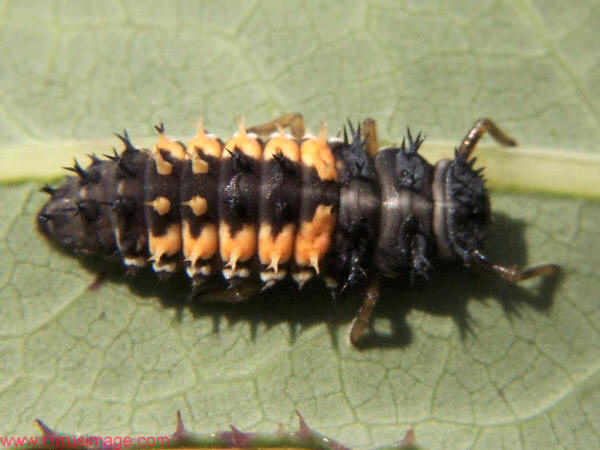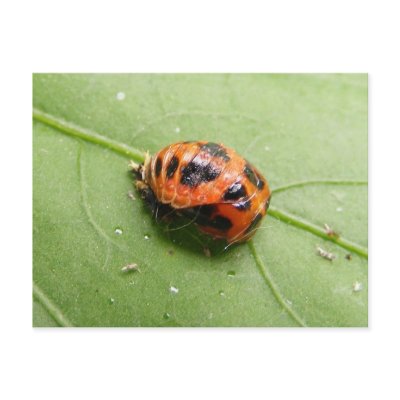Have you ever thought about the life cycle of a lady bug? Until recently, I hadn't either. This thought occurred while standing under a tree in Greenville. I was with a friend and she noticed a bunch of odd looking bugs. They looked similar to a ladybug (redish tent, black spots) but they were furry almost. We did a little research and soon discovered that they were in fact ladybugs, only they had not yet turned into what we are used to seeing. Sometimes its nice to stop and take a moment to appreciate what nature is doing.
The Egg. As most insects, the lady bug does hatch from an egg. What we saw were very small black spots and they were attached to leaves. It would have been very easy to miss... I found that they are usually a pale yellow color, althought that's not what we saw. Maybe the eggs we discovered were old?! It takes 3-5 days for the eggs to hatch...so not very long at all.
The baby. I've had tiny lady bugs land on me before and of course I always refer to them as the 'baby'. Those tiny lady bugs are just that...they are small. Actual baby lady bugs do not resemble their 'adult' nature at all. It's actually pretty gross if you ask me. They are scary and if something like this landed on me, I would not believe that luck was coming my way...nor would I think of it as a lady.
The life cycle of a lady bug makes me think a lot of captipellars, while they are young they spend their time eatting...and eatting...and eatting. They do this for about 2-3 weeks.
The Pupa. After filling up their long ugly bellies, they attach themselves to a leaf and pupate. This would be like the cacoon. They stay inside a 'shell like' home for about a week. These are the little bugs we came across in Greenville. These little guys sparked our curiousity.
There were a lot of them on the leaves and with a little time to kill, we started looking for them. Don't they resemble the lady bug were used to? The fur I was talking about early is what's closest to the leaf. It may be hard to see in this picture.
The Lady bug. Once the lady bug removes itself from the shell, it may be different alterations of red and in some cases more of a yellow color. The shell will still stay on the leaf. The lady bug is a fond insect once it's an adult...but somehow I won't ever be able to think of them the same.
What
little things in nature are miracle enough?
The pattern of frost on your window?
The veins of a leaf? A blade of
grass? The life cycle of an insect? List them in the comment box below.



No comments:
Post a Comment